 W
WThe 4.5mm MKR was a Swedish prototype rimfire cartridge developed for the prototype Interdynamics MKR bullpup assault rifle and carbine.
 W
WThe Carl-Gustaf recoilless rifle, designated in Swedish service as the Granatgevär m/48, is an 84-mm man-portable reusable anti-tank weapon originally produced by Carl Gustafs Stads Gevärsfaktori in Sweden. Developed in 1946, it was one of the many recoilless rifle designs of that era. While similar weapons have generally disappeared from service, the Carl-Gustaf is still in production and remains in widespread use today. The Carl-Gustaf is a lightweight, low-cost weapon that uses a wide range of ammunition, which makes it extremely flexible and suitable for a wide variety of roles.
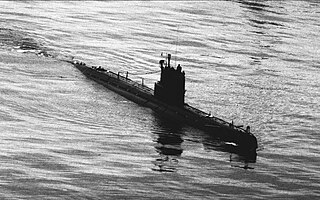 W
WAn incident weapon is typically an anti-vehicle device intended to inflict disabling damage or prevent escape without killing the vehicle operators. Incident weapons were used by military personnel during the Cold War to discourage clandestine use of submarines within territorial waters without causing casualties which might escalate into warfare.
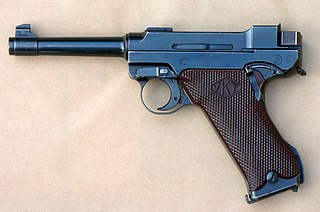 W
WThe Lahti L-35 is a semi-automatic pistol designed by Aimo Lahti that was produced between 1935 and 1952. Designed to be manufactured autonomously in Finland, the pistol was used by Finland throughout the Winter War and Continuation War. Considered to be of high quality, the Lahti was well manufactured and worked reliably in cold conditions or when fouled. The use of a bolt accelerator, an uncommon feature in a pistol, helped make the Lahti reliable.
 W
WThe Main Battle Tank and Light Anti-tank Weapon, also known as the NLAW, is a joint British and Swedish short-range fire-and-forget anti-tank missile system. Designed for use by infantry, the MBT LAW is shoulder fired and disposable, firing once before being disposed of. It is currently in use with the military forces of the United Kingdom, Finland, Luxembourg, and Sweden, among others.
 W
WThe Miniman is a disposable single-shot 74-mm unguided anti-tank smooth bore recoilless weapon, designed in Sweden by Försvarets Fabriksverk (FFV) and became operational in 1968. The Miniman is delivered with the HEAT projectile pre-loaded launch tube. In appearance, the Miniman is similar to a single section tube US M72 LAW and French Sarpac of the same era. In 1986 the Swedish Army adopted the FFV AT4, designated the Pansarskott m/86, to replace the Miniman. FFV engineers adopted the rugged but simple firing and safety mechanism of the Miniman for the AT4. The Miniman uses a unique version of the high-low chamber launch system that results in no recoil.
 W
WThe Pansarvärnspjäs 1110 is a Swedish 90 mm recoilless gun also widely known as Pv-1110. It entered service at the early 1960s and was phased out of service in the Swedish Army in the late 1990s after 1,600 had been produced. Some 300 weapons were transferred to Estonia, Latvia and Lithuania.
 W
WGlock is a brand of polymer-framed, short recoil-operated, locked-breech semi-automatic pistols designed and produced by Austrian manufacturer Glock Ges.m.b.H. The firearm entered Austrian military and police service by 1982 after it was the top performer in reliability and safety tests.
 W
WGlock is a brand of polymer-framed, short recoil-operated, locked-breech semi-automatic pistols designed and produced by Austrian manufacturer Glock Ges.m.b.H. The firearm entered Austrian military and police service by 1982 after it was the top performer in reliability and safety tests.
 W
WThe RB-04 is a long-range fire-and-forget air-to-surface, anti-ship missile. The missile was known as the "RB-304" during development and early service years.
 W
WThe RBS-15 is a long-range fire-and-forget surface-to-surface and air-to-surface anti-ship missile. The later version Mk. III has the ability to attack land targets as well. The missile was developed by the Swedish company Saab Bofors Dynamics.
 W
WThe Sjögren Inertia Shotgun is a 12 gauge semi-automatic shotgun that was designed by the Swedish inventor Carl Axel Theodor Sjögren, initially manufactured by AB Svenska Vapen- och Ammunitionsfabriken in Sweden and then by Håndvåbenværkstederne Kjøbenhavn in Denmark. It used an inertia system later revived by the Italian firm Benelli and today widely used in shotguns. A small number of semi-automatic military rifles in 7.62mm x 63 calibre were based on the Swedish Mauser using the Sjögren system, fed from internal seven round magazines, were also built, and tested by potential buyers, but initially found no market. Resurrected in the 1930s, it was offered in 3 distinct calibres for wider appeal. Though it failed to attract any European buyers, some 10,000 were eventually taken up by security forces in Siam, Paraguay and by various Chinese warlords.
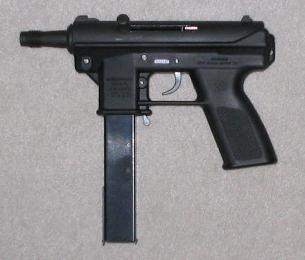 W
WThe Intratec TEC-9, TEC-DC9, KG-99 and AB-10 are a blowback-operated line of semi-automatic pistols. They were developed by Intratec, an American subsidiary of the Swedish firearms manufacturer Interdynamic AB. Introduced in 1984, the TEC-9 was made of inexpensive molded polymers and a mixture of stamped and milled steel parts. The simple design of the gun made it easy to repair and modify. The TEC-9 developed a negative reputation for its association with organized crime, street gangs and mass shootings in the 1990s. Most notably it was used during the 101 California Street shooting and the Columbine High School massacre. However, it was a commercial success, with over 250,000 being sold.
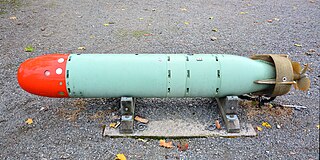 W
WThe Torped 45 is a lightweight torpedo intended for ASW and surface targets, providing multiple-target active/passive homing combined with wire guidance. It is designed and manufactured by Saab Dynamics. It was designed for the Swedish Navy, based on the experience gathered from the well proven 43-series of torpedoes.
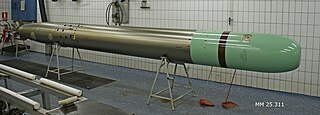 W
WTorped 613 is a heavyweight torpedo still in use by the Swedish Navy. It is wire-guided and has a passive sonar sensor, which sends back information through the wire. The torpedo was developed in the 1970s as a cooperation project between Denmark, Norway and Sweden. Testing was done during the period 1981-1983.